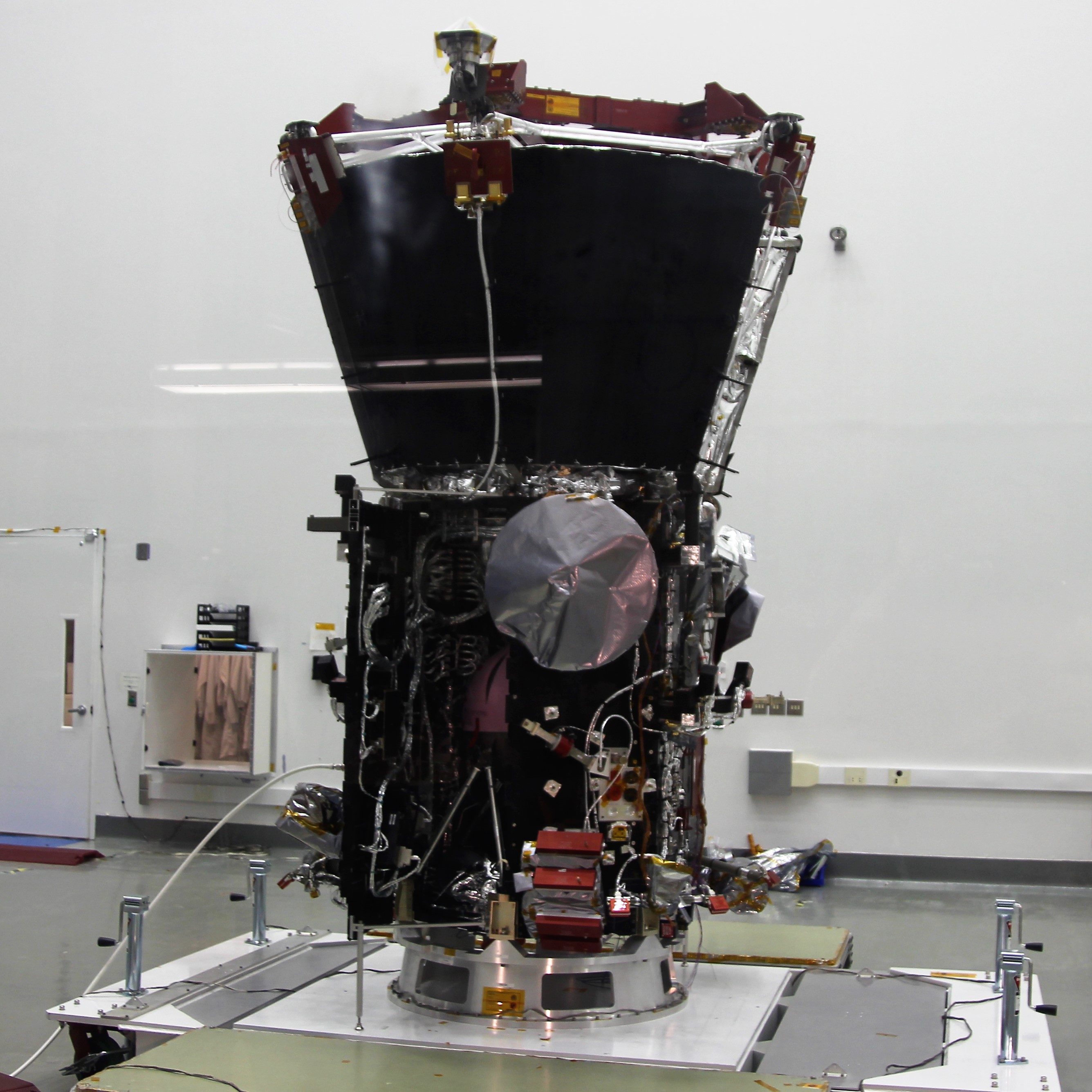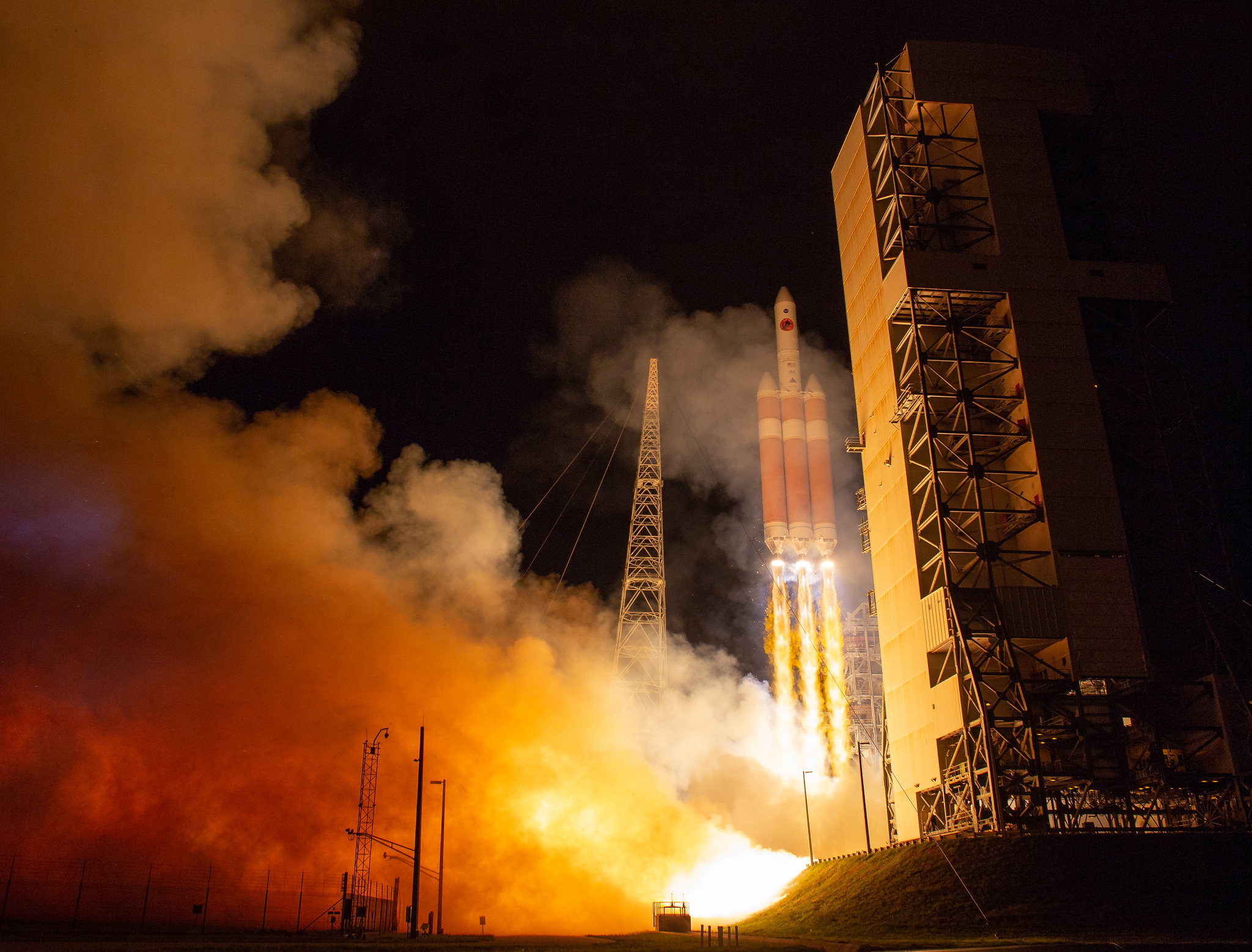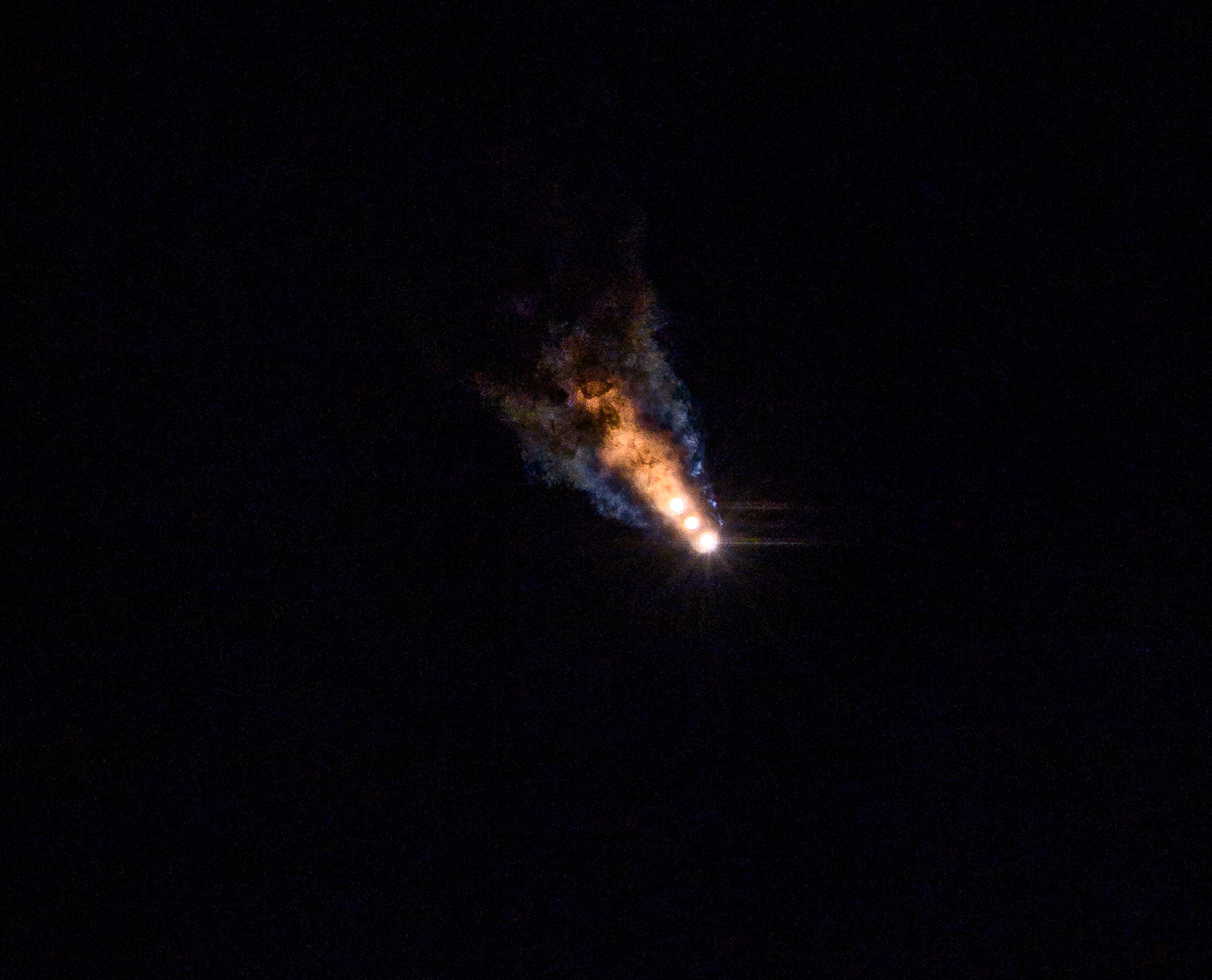NASA's Parker Solar Probe Is Finally Headed For the Sun
August 12, 2018
Following decades of development, NASA's Parker Solar Probe finally left Earth aboard United Launch Alliance's Delta IV Heavy rocket at 03:31 AM EDT (07:31 UTC) from Cape Canaveral, Florida. Over the next seven years, NASA will use the probe to study the Sun, hoping to answer long-asked questions about its complex behavior.
Yesterday, the first launch attempt ended in a scrub with just 115 seconds until liftoff due to a vehicle anomaly. Since then, launch teams adjusted the launch vehicle configuration and made some additional minor unrelated repairs in preparation for today's launch.
With storms moving through the area earlier in the afternoon, launch teams moved Delta IV Heavy's Mobile Service Tower back over the 236 ft. tall vehicle. Weather for launch time was initially forecasted at only a 60% chance of favorable conditions, but by the time the launch broadcast started weather had improved to 95% favorable.
Parker Solar Probe aims to fulfill the vision set forth in 1958 by the Simpson Committee of the National Academy of Sciences. The Committee recommended a probe to study the Sun's environment from within Mercury's orbit. At the time the probe was originally conceived, the requirements were technically infeasible due to the extreme conditions near the Sun and a lack of technology to protect against those conditions. Advancements in "lightweighting, materials, miniaturization [and] everything that goes into making the spacecraft small, compact and light enough" will help the probe reach and maintain its target orbit, explained Project Scientist Nicky Fox at NASA's pre-launch briefing.
The probe will help scientists understand complex processes going on in our Sun's atmosphere. The solar wind, solar storms and coronal mass ejections can all have an impact on our technology on Earth, causing satellite communication issues and even power outages.

Parker Solar Probe at Goddard Space Flight Center in Greenbelt, MD (April 2018)
Image Credit: RocketLaunch.Live
With it's closest approach to the Sun at an altitude of under 4 million miles, Parker Solar Probe will come seven times closer to the Sun than any other spacecraft in history and will reach a maximum speed of 430,000 miles per hour, making it the fastest human-made object in existence.
Parker Solar Probe began it's journey to the Sun on the 10th flight of United Launch Alliance's Delta IV Heavy. The rocket is composed of three Common Booster Cores strapped together, making it one of the world's most powerful rockets and the only rocket capable of putting the probe into its complex trajectory. The vehicle also includes a Star-48BV upper stage which will provide about two-thirds of the vehicle's velocity for this mission.
The probe will use a complex trajectory as it leaves Earth, including a total of seven flybys of the planet Venus over the next seven years, each time bringing the craft closer to the Sun. The solar probe's first encounter with Venus is expected to occur in approximately six weeks.
Parker Solar Probe is named for solar astrophysicist Dr. Eugene Parker, who commented after launch, "All I can say is: Wow! Here we go! We're in for some learning over the next several years!" Scientists expect to receive the first scientific data from Parker Solar Probe this coming December.



